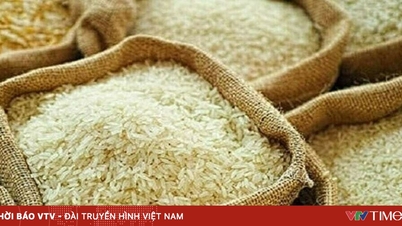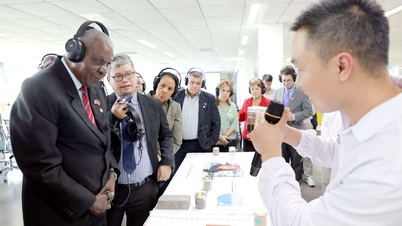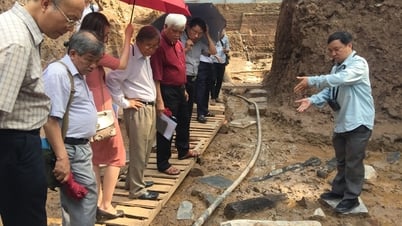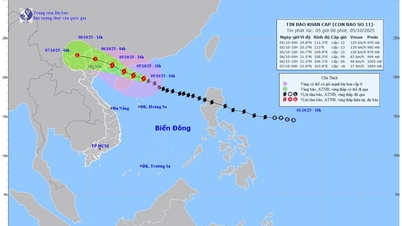Determining land value is an important step in the development process of real estate projects. According to a recent survey by the Ministry of Construction , more than 50% of real estate projects are facing difficulties, obstacles or slow implementation due to difficulties in determining land prices using the market price method. In 2022, the ability to determine prices and the market has also contributed to a sharp decrease in real estate supply compared to 2021.
Land valuation is an important step.
Currently, the Ministry of Natural Resources and Environment is collecting opinions from relevant ministries, branches and agencies on the amendment of the draft Decree 44 and Circular 36. Among the proposed amendments, there are many different views revolving around the current land valuation methods, especially the removal of the "surplus" method, which is a controversial issue. The difference of the surplus method, regarding this issue, Ms. Do Thi Thu Giang, Director of Consulting Services, Savills Ho Chi Minh City, an expert with many years of experience in valuation, said that there are currently many different valuation methods and depending on the characteristics of the property and the availability of data, there will be appropriate approaches and valuation methods.
For example, Ms. Giang analyzed, the comparison method is suitable for real estate with small area, and the number of similar transactions is common. However, this method has limitations in terms of data: the collected transaction information has a difference in the actual transaction value and the transaction value on the contract; transaction details are not fully disclosed. In the case of real estate with large area, or development projects, the number of similar comparable real estate is very limited, leading to the need to make large adjustments, affecting the accuracy of the valuation results. With the land price adjustment coefficient method, the adjustment coefficient is applied fixedly in a period, not reflecting market fluctuations in a short time. In addition, the adjustment coefficient is also based on the analysis results of limited and inaccurate land transaction data.
Meanwhile, the surplus method is more suitable for valuing large plots of land that are under development. This method takes the estimated revenue minus the estimated investment cost to get the remaining land value. “Assume a plot of land has a potential commercial and service use; with the comparison method or adjustment coefficient, the land value will be estimated at a specific value. However, with the surplus method, the land can be assumed to be developed with different types of commercial and service uses such as offices, shopping malls, or hotels, thereby finding the highest value of the land, ensuring the principle of the best and most effective valuation of the property,” the expert cited. In another example, the land to be valued is a mixed land plot, with residential land and commercial and service land. Thus, using the comparison method or adjustment coefficient will not be able to fully and correctly reflect the mixed value due to the limitation in the number of comparable assets with similar component ratios in the mixture or the lack of a suitable coefficient.
In fact, this method also has limitations due to many assumptions and subjective forecasts. To minimize these limitations, during the valuation process, it may be required to perform additional methods for comparison and contrast to bring about accurate valuation results.
The role of the surplus method
From the above analysis, Ms. Do Thi Thu Giang believes that the surplus method should be retained because this method is suitable in estimating land with potential for development or redevelopment.
Evaluating further on the role of the surplus method, Mr. Troy Griffiths, Deputy Managing Director of Savills Vietnam, said that in most cases, eliminating the surplus valuation method will lead to more conservative valuations. “Land funds that are being planned for project development will be valued more accurately through the surplus method. This method shows the overall profitability of the project as well as financial indicators that show whether the project is financially sustainable or not,” said Mr. Troy Griffiths.
“In Vietnam, as the Government is discussing important updates to the land valuation process, it is understandable that the residual method is being considered for elimination as it relies on many subjective variables. When implementing any new method, a method with higher integrity and less subjective factors should be considered. However, the residual method should be applied appropriately as an accepted and applied valuation method,” added Savills Deputy Managing Director.
In the event that the residual method is eliminated, there are still a number of other valuation methods; but he notes that the most basic issue is simply direct comparison. The purpose of valuation is to simulate market behavior to determine market value. Most buyers often rely solely on the value of similar properties nearby to determine the value of their property.
Experts say the residual method or the hypothetical method is applied quite effectively in many countries. Banks, courts and arbitrations often accept and debate the variables used. This is simply the Discounted Cash Flow (DCF) method with more subjective variables, so it is less popular than other methods./.
Source link



![[Photo] Bustling Mid-Autumn Festival at the Museum of Ethnology](https://vphoto.vietnam.vn/thumb/1200x675/vietnam/resource/IMAGE/2025/10/4/da8d5927734d4ca58e3eced14bc435a3)

![[Photo] General Secretary To Lam attends the 8th Congress of the Central Public Security Party Committee](https://vphoto.vietnam.vn/thumb/1200x675/vietnam/resource/IMAGE/2025/10/4/79fadf490f674dc483794f2d955f6045)

![[Photo] Solemn opening of the 8th Congress of the Central Public Security Party Committee, term 2025-2030](https://vphoto.vietnam.vn/thumb/1200x675/vietnam/resource/IMAGE/2025/10/4/f3b00fb779f44979809441a4dac5c7df)













































![[VIDEO] Summary of Petrovietnam's 50th Anniversary Ceremony](https://vphoto.vietnam.vn/thumb/402x226/vietnam/resource/IMAGE/2025/10/4/abe133bdb8114793a16d4fe3e5bd0f12)

![[VIDEO] GENERAL SECRETARY TO LAM AWARDS PETROVIETNAM 8 GOLDEN WORDS: "PIONEER - EXCELLENT - SUSTAINABLE - GLOBAL"](https://vphoto.vietnam.vn/thumb/402x226/vietnam/resource/IMAGE/2025/7/23/c2fdb48863e846cfa9fb8e6ea9cf44e7)



































Comment (0)